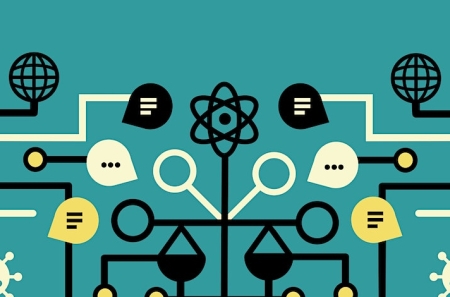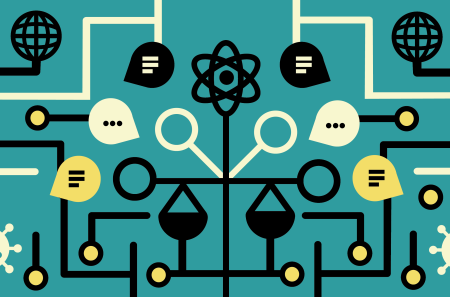
Water is a public health issue
13 May 2021Availability of a secure supply of clean water is a necessity that comes at a high cost, but has an as yet unrealised value. Find out more in this blog by Professor Fiona Regan, DCU.
By Professor Fiona Regan
School of Chemical Science, and The Water Institute, Dublin City University
No. 11 in the Current Opinion Series of the RIA Climate Change and Environmental Science Committee
Water is the most precious commodity in the world, but it is not the most valued. We are wasting water. All of us; everywhere on the planet. In Ireland we might live in a wet climate, but our management of this invaluable resource needs to be improved—urgently—because too much of it runs down the drain.
Looking back
One thousand years ago Pliny [1] outlined guidelines for determining how good water was to drink. Pliny stressed that if there were ‘eels’ in the water, then it was probably clean because it could support life. The idea that people primarily drank beer throughout the Middle Ages is widespread, but it is also wrong. Bad water certainly was a concern, but people knew the difference between what was good and what wasn’t. Food historian Jim Chevallier [2] points out that in the writings of medieval Europe the source of water—a well or fresh stream—was the focal point of a village. In larger towns there were even infrastructures to supply water to citizens. Beer was seen as more nutritious, but it was not a replacement for water.
A cholera outbreak in 1831 provided a powerful incentive to improve sanitation in London. [3] Water closets were adopted by the more affluent households of London in the early nineteenth century. As a result, sewers that had been intended to take rainwater into the Thames now carried raw sewage. The crisis peaked in the ‘Great Stink’ of London in 1858 [4], resulting in the passage of a bill through Parliament to provide money for a massive new sewer scheme for the city.
In the nineteenth century physicians demanded improvements in water supply, drainage and sanitation. This transformed human health. John Gray, Irish physician, surgeon and politician, did really important work in relation to water supply in Dublin [5]. He was elected an alderman of Dublin Corporation in 1852. The issue of clean water was at the top of his agenda. Because of his background in medicine, he recognised that the introduction of clean water for Dublin was essential in overcoming the outbreaks of typhus and cholera responsible for so many deaths. He is recognised by a statue on O’Connell Street in Dublin for his contributions to provision of a water supply.
Historically, doctors recommended that their patients go to the seaside to help with a variety of ills. Doctors would even write a prescription stating how long patients should be in the water and how many times this should be repeated. The practice of using seawater as a medical therapy has a name—thalassotherapy. Richard Russell, an eighteenth-century British physician, encouraged thalassotherapy [6]. Sometimes he recommended drinking seawater as well as bathing in it. The greater mineral content of marine waters helps people with psoriasis and eczema. We know many swimmers take a plunge all year round—not just on the occasional hot day. These cold-water swimming activities are reported to stimulate the release of hormones, which in turn can have very significant long term beneficial effects [7].
Water quality and emerging challenges
‘Wash your hands; save lives’. This has been a critical message during the COVID-19 crisis. But what if you don’t have basic running water? We assume everyone does, But, incredibly, too many people don’t. We have our ‘boil water’ notices on occasion, but millions of people don’t have any safe water or sanitation services [8]. According to the World Health Organization and UNICEF, in 2015 91% of the world’s population used drinking water from improved sources (58% from a piped connection in their dwelling, plot or yard, and 33% from other improved drinking water sources), leaving over 660 million people lacking access to an improved source of water [9]. Water, sanitation and hygiene have the potential to prevent at least 9.1% of the global disease burden and 6.3% of all deaths [10]. Globally, the microbiological quality of drinking-water has been implicated in the spread of important infectious and parasitic diseases such as cholera, typhoid, dysentery, hepatitis, giardiasis, guinea worm disease and schistosomiasis.
Our rivers and lakes are major sources for our drinking water supply, so keeping them free from chemical contamination should be a priority. The impact of chemicals is a growing concern. This includes man-made chemicals (such as pesticides, cosmetics, personal and household care products, pharmaceuticals, etc.), which are in use everywhere and are seemingly essential for modern society. Industrial production activities and consumer habits driving increased production are creating growing challenges for the water industry to deal with, including the need to remove chemicals from wastewater before it returns to rivers or the sea, or from drinking water before it reaches our tap.
A sustainable future, if water is valued
In order to manage this current COVID-19 crisis, it is important to realise the role that water plays in protecting people and communities from diseases. Therefore, greater investment in water and sanitation is needed, and economists tell us that water investment is an investment in a sustainable future [11]. The impact of clean water technologies on public health in the U.S. is estimated to have had a rate of return of 23 to 1 for investments in water filtration and chlorination during the first half of the twentieth century [12].
Sixty years ago the classic Silent Spring [13] by Rachel Carson highlighted the significant environmental and human risk of indiscriminate use of manmade chemicals. The world today continues to experience the consequences of uncontrolled development of human activities. The Minamata pollution disaster in Japan and the disease it created in the 1950s [13] was caused by the release of methyl mercury in industrial wastewater. This incident led to the Minamata Convention on mercury in 2013. We now know, however, that the Japanese government has approved a plan to release 1 million tonnes of contaminated water from the Fukushima nuclear power plant into the sea. Experts differ on the damage this may cause, but releasing radioactive waste into the ocean can only have a negative impact on the ecosystem and public health.
With an increasing rate of natural disasters due to climate change, the goal of securing clean water is more challenging and urgent. The solution to solving water quality problems lies with everybody—consumers and producers. As consumers we need to demand a better product, but we also need to value it more. As producers, provision of clean water should be a priority—because the health of the environment and its inhabitants relies on it.
The pace of climate change means we have no time to lose.
References
[1] Pliny (the Elder), The natural history of Pliny, vol. 5. Translated by John Bostock,(London, 1856).
[2] Jim Chevallier, ‘The great medieval water myth’, Les Leftovers 16 November 2013; available online at: http://leslefts.blogspot.com/2013/11/the-great-medieval-water-myth.html (accessed 19 April 2021).
[3] R.J. Davenport et al., ‘Cholera as a “sanitary test” of British cities, 1831–1866’, History of the Family, 24 (2) 2019, 404–38.
[4] The Great Stink of London and the attempt to improve London's sanitation is outlined in Stephen Halliday, The Great Stink of London: Sir Joseph Bazalgette and the cleansing of the Victorian capital (Sutton, 1999).
[5] Mary Mulvihill, ‘An Irishwoman’s diary’, The Irish Times 15 March 2003; available online at: https://www.irishtimes.com/opinion/an-irishwoman-s-diary-1.352274 (accessed 11 May 2021).
[6] Richard Russell, The Oeconomy of Nature in Acute and Chronical Diseases of the Glands (8th edn). (London and Oxford, 1755).
[7] B. Knechtle, Z. Waskiewicz, C. Vitor Sousa, L. Hill and P. Nikolaidis, ‘Cold water swimming—benefits and risks: a narrative review’, International Journal of Environmental Research and Public Health 17 (23) (2020), 8984; doi:10.3390/ijerph17238984.
[8] Centers for Disease Control and Prevention (CDC), ‘Global WASH fast facts’, available online at: https://www.cdc.gov/healthywater/global/wash_statistics.html (accessed 19 April 2021).
[9] World Health Organization, ‘1 in 3 people globally do not have access to safe drinking water’, News release, 18 June 2019; available online at: https://www.who.int/news/item/18-06-2019-1-in-3-people-globally-do-not-have-access-to-safe-drinking-water-unicef-who (accessed 19 April 2021).
[10] CDC, ‘Global WASHash fast facts, https://www.cdc.gov/healthywater/global/wash_statistics.html (19 April 2021).
[11] OECD, ‘Investing in a sustainable future’, available online at: https://www.oecd.org/greengrowth/investing-in-a-sustainable-future.htm (accessed 19 April 2021).
[12] David Cutler and Grant Miller, ‘The role of public health improvements in health advances: the twentieth-century United States’, Demography, 42 (1), (February 2005), 1–22.
[13] Rachel Carson, Silent Spring (New York, 1962).
[14] Shabnum Nabi, ‘Methylmercury and Minamata Disease’, in Toxic effects of mercury, 187–99 (New Delhi, 2014).
Interview with Professor Fiona Regan
When did you join the RIA Climate Change and Environmental Science Committee?
I was delighted to join the Climate Change and Environmental Science Committee in 2018.
What is your area of research expertise and where are you based?
I am a professor of chemistry and I work specifically in the area of analytical science. This means I am interested in measuring things in the environment. I am based at the School of Chemical Sciences in Dublin City University, and I am founder and director of the DCU Water Institute.
I lead a research group in analytical and environmental research, focusing on chemicals of emerging concern. I work with experts across many disciplines to develop solutions to water-related problems. I am interested in long-term water quality data, and I develop sensor technologies for deployment in the field for water-quality monitoring.
What do you think is the single most pressing environmental issue facing Ireland?
I think water quality and quantity are a major area of concern in Ireland. Environmental waters are used as sources of drinking water and therefore we must ensure safe water is available for all. Treated wastewater contains contaminants that enter surface waters and impact the ecosystem health.
Climate-change weather patterns mean that changes in rainfall events can impact water quality significantly. Boil-water notices, and other water quality failures, show how Ireland is unprepared to meet the needs of people and is failing in meeting Sustainable Development Goal 6 (SDG6) on clean water and sanitation.
In your opinion what are some of the most compelling solutions to this issue?
We need to value water.
Significant forward investment in infrastructure, improved water management and a focus on water conservation and re-use is needed. There must be a desire to deliver a safe, secure water supply.
Individuals can make a change at home in reducing usage, but this needs to be facilitated by improvements in water quality and better demand-led management. There is a need for more water reservoirs and improvements in treatment and distribution infrastructure.
There is a real advantage in providing a sustainable, cost-effective, good quality supply of water and wastewater.



